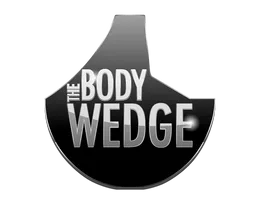Understanding Trigger Points
A trigger point is a tight band of skeletal muscle that feels like a small knot under the skin. These points can be tender and cause pain either at the trigger point or elsewhere in the body. Trigger points can also limit your range of motion and cause symptoms such as headaches, joint pain, eye issues, and tinnitus (ringing in the ears).
Unlike muscle cramps, trigger points do not cause the entire muscle to spasm but rather a small portion of it. Treatments like massage and needling can help alleviate the pain caused by trigger points.
Types of Trigger Points
Trigger points are classified based on where they cause pain in the body:
- Passive Trigger Points: Hurt at the exact location where they are pressed.
- Active Trigger Points: Cause pain at the location and radiate pain to other parts of the body.
Common Locations for Trigger Points
Trigger points can develop anywhere there is muscle tissue. However, they are most commonly found in:
- Upper trapezius muscles (neck and shoulders)
- Quadratus lumborum muscles (lower back)
- Hamstrings
- Calf muscles
- Iliotibial (IT) band
Causes of Trigger Points
Trigger points form due to muscle injury or continuous stress. Common stressors include:
- Repeated muscle tension
- Lack of sleep or poor sleeping positions
- Prolonged unnatural postures
- Physical inactivity
Other factors contributing to trigger points may include hormonal changes, vitamin B or iron deficiencies, infections, and autoimmune diseases. The exact cause of trigger point pain remains unclear, but one theory suggests that muscle tension limits blood flow, reducing oxygen and nutrients, and creating a cycle of pain.
Associated Conditions
Chronic trigger point pain may lead to myofascial pain syndrome, characterized by:
- Persistent pain in specific areas
- Limited range of motion
- Headaches
- Poor posture and sleep quality
- Dizziness
- Depression
Treatment Options
The primary goal of treatment is to reduce pain from trigger points. While some methods are proven effective, others lack scientific backing.
-
Medication: Pain relievers (NSAIDs), muscle relaxants, anticonvulsants, antidepressants, and Botox are commonly used.
-
Therapy:
- Manual Pressure: Deep tissue massages and myofascial release help align fascia and improve circulation. Self-massage with a tennis ball or foam roller can also be beneficial.
- Dry Needling: Inserting a needle into the trigger point to release tension.
- Trigger Point Injections: Similar to dry needling but with an anesthetic or steroid solution.
- Spray and Stretch: Applying a cold spray followed by stretching.
- Ultrasound Therapy: Heating muscles to reduce pain, though results vary.
Summary
Trigger points are tight muscle bands causing pain and limiting movement. They arise from injury or stress and can be treated through various methods, including medication, physical therapy, and massage. While painful, trigger points are not dangerous.
A Word From Our Experts
If you experience painful muscle knots, do not worry. Trigger points are benign and manageable. Consult your healthcare provider to rule out underlying conditions and consider physical therapy to treat trigger points. By learning self-management strategies, you can control and alleviate your pain effectively.

